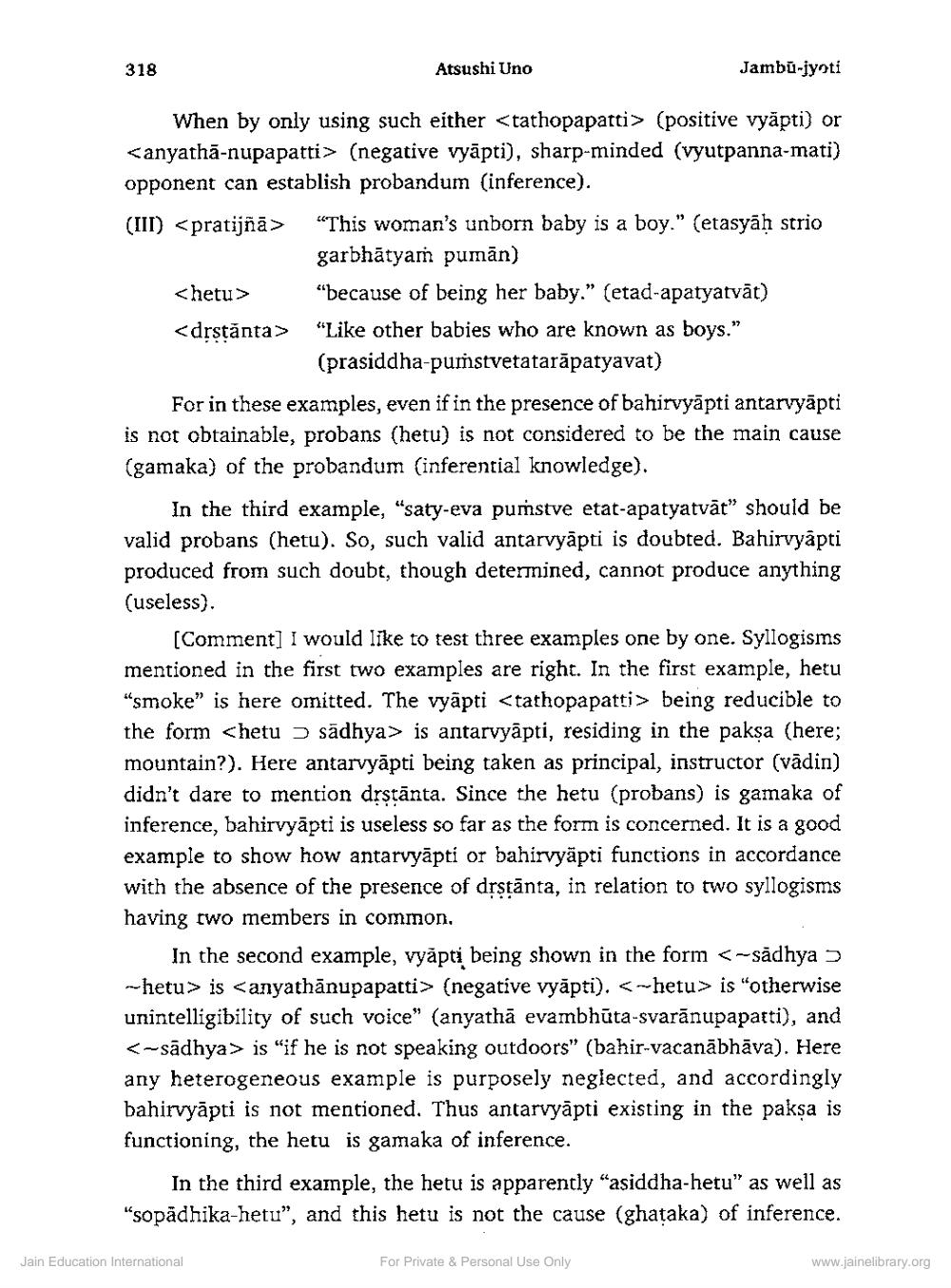Book Title: Antarvyapti Interpreted in Jainism Author(s): Atsushi Uno Publisher: Z_Nirgranth_Aetihasik_Lekh_Samucchay_Part_1_002105.pdf and Nirgranth_Aetihasik_Lekh_Samucchay_Part_2 View full book textPage 9
________________ 318 Atsushi Uno Jambu-jyoti When by only using such either <tathopapatti> (positive vyäpti) or <anyathā-nupapatti> (negative vyāpti), sharp-minded (vyutpanna-mati) opponent can establish probandum (inference). (III) <pratijñā> <hetu> <drstănta> “This woman's unborn baby is a boy." (etasyāḥ strio garbhātyarn pumān) "because of being her baby." (etad-apatyatvāt) "Like other babies who are known as boys." (prasiddha-pumstvetatarāpatyavat) For in these examples, even if in the presence of bahirvyāpti antarvyāpti is not obtainable, probans (hetu) is not considered to be the main cause (gamaka) of the probandum (inferential knowledge). In the third example, "saty-eva pumstve etat-apatyatvāt" should be valid probans (hetu). So, such valid antarvyāpti is doubted. Bahirvyāpti produced from such doubt, though determined, cannot produce anything (useless). (Comment] I would like to test three examples one by one. Syllogisms mentioned in the first two examples are right. In the first example, hetu "smoke" is here omitted. The vyāpti <tathopapatti > being reducible to the form chetu sādhya> is antarvyāpti, residing in the paksa (here; mountain?). Here antarvyāpti being taken as principal, instructor (vādin) didn't dare to mention drstānta. Since the hetu (probans) is gamaka of inference, bahirvyāpti is useless so far as the form is concerned. It is a good example to show how antarvyāpti or bahirvyāpti functions in accordance with the absence of the presence of drstānta, in relation to two syllogisms having two members in common. In the second example, vyāpti being shown in the form <-sādhya > -hetu> is <anyathānupapatti> (negative vyāpti). <-hetu> is "otherwise unintelligibility of such voice" (anyathā evambhūta-svarānupaparti), and <-sādhya> is "if he is not speaking outdoors" (bahir-vacanābhāva). Here any heterogeneous example is purposely neglected, and accordingly bahirvyāpti is not mentioned. Thus antarvyāpti existing in the paksa is functioning, the hetu is gamaka of inference. In the third example, the hetu is apparently “asiddha-hetu" as well as "sopädhika-hetu”, and this hetu is not the cause (ghataka) of inference. Jain Education International For Private & Personal Use Only www.jainelibrary.orgPage Navigation
1 ... 7 8 9 10 11 12 13 14
